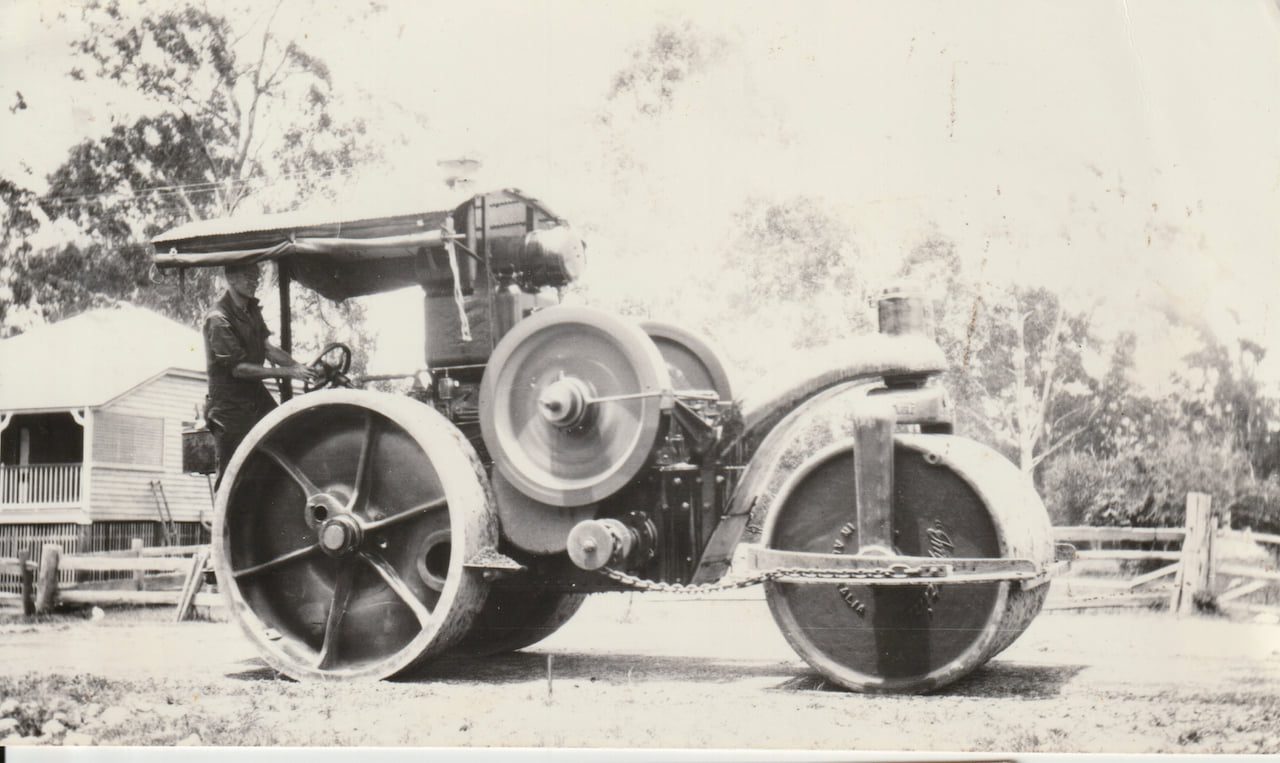Prior to the first visits by explorers and early settlers, the Blackall Range was known only to the First Nations peoples, who travelled along their pathways through the scrub and forest to Baroon for the annual Bunya Festival. From the early 1870s the abundant supply of cedar and beech on the steep-sided plateau attracted many timber getters. They successfully hacked their way up the range, but there was no route suitable for bullock wagons.
The first track from Mellum Creek (Landsborough) to Bald Knob was cut by Isaac Burgess (the Blackall Range’s first land selector, in November 1878) and his men in 1880, and from there to Obi Obi Creek (Maleny) by Joseph Eyles, Francis Dunlop and Tom Maddock. In 1883 the Minister of Lands was welcomed by the Blackall Range residents who told him “Your visit to the Blackall Range will show you the many difficulties the small number of selectors have had in opening up this magnificent agricultural land, the outlay and labour in the clearing and making of roads having been accomplished by the unaided efforts of the selectors themselves”. In 1884, the surveyor Alfred Delisser compared routes “likely to give access to the Blackall Range”. Of these, he said the road from Mellum Creek “is extremely steep still in some places, it is principally used by the timber getters as it leads down to Coochin Creek saw mill”. This was the timber track cut by Burgess and others in 1880. As late as 1910 this route was described as “one of the worst pieces of road in Queensland”. Nonetheless the 1880 timber track forms the backbone of what today is the Maleny-Landsborough Road. Construction of the Maleny-Landsborough Road started in 1922 and was one of the first roads in Queensland constructed under a Main Roads scheme to provide employment during the Depression. It was sealed with bitumen in 1927.
The Challenge of Bald Knob
The timber track cut in 1880 went over the top of Bald Knob (now called Wilkes Knob) on land selected by James Clark. It was a difficult and unnecessary climb, but one with a spectacular view. Isaac Burgess claimed he could cut a detour around the north of the knob in four days. His track, made in the early 1880’s, is now called Hovard Road, but for a long time was known as “The Fourday”. It is reported that he actually took two weeks! A third track had existed since the early 1880’s, along the south of Bald Knob, but it was often impassable. It was finally constructed in the 1930’s. On its completion in 1935 the Courier Mail claimed it would open up “new and attractive country to tourists.” It is the road now know by locals as the Ice Box.
(With thanks to the Friends of Pattemore House for the story)
Photo: Roller used on the Landsborough/Maleny Rd town section 1922. Courtesy Dave Hankinson Collection

